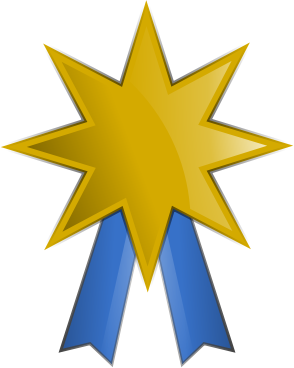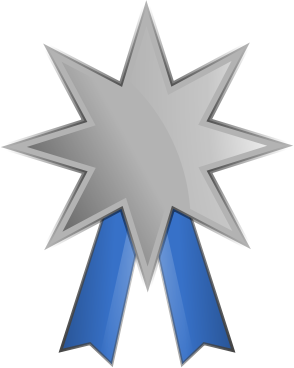Team:UCSD Software/SoftwareAchievements
From 2014.igem.org
(Difference between revisions)
| (13 intermediate revisions not shown) | |||
| Line 138: | Line 138: | ||
*******************************/ | *******************************/ | ||
.firstHeading { | .firstHeading { | ||
| - | width: 575px; | + | width: 0px; //575px; |
margin: 0px auto; | margin: 0px auto; | ||
padding-top: 100px; | padding-top: 100px; | ||
| Line 150: | Line 150: | ||
background-color: #003D99;//#383838; | background-color: #003D99;//#383838; | ||
border: 0 none; | border: 0 none; | ||
| - | height: | + | height: 1px; // 46 px |
z-index: 100; | z-index: 100; | ||
top: 0; | top: 0; | ||
| Line 226: | Line 226: | ||
font-size: 14px; | font-size: 14px; | ||
color: #414141; | color: #414141; | ||
| - | width: 960px; | + | width: 960px;//960px; |
margin-left: auto; | margin-left: auto; | ||
margin-right: auto; | margin-right: auto; | ||
| Line 255: | Line 255: | ||
<div style = "background-color: #fff" id = "topUp"> | <div style = "background-color: #fff" id = "topUp"> | ||
| + | <!--<div class = "neighborhood-guides"> | ||
| + | <div clss = "container">--> | ||
<!-- START GOLD MEDAL--> | <!-- START GOLD MEDAL--> | ||
<div class="row marketing" > | <div class="row marketing" > | ||
| Line 265: | Line 267: | ||
<h1>iGEM Gold Medal requirements</h1> | <h1>iGEM Gold Medal requirements</h1> | ||
<ul> | <ul> | ||
| - | <li>We did some modeling of circuits predicted by our tool, validation of search results, and complexity analysis work of our project. You can find details under the Validation section and Modeling section of the <a href = "https://2014.igem.org/Team:UCSD_Software/Project">Project</a> page.</li> | + | <li>We did some modeling of circuits predicted by our tool, validation of search results, and complexity analysis work of our project. You can find details under the Validation section and Modeling section of the <a href = "https://2014.igem.org/Team:UCSD_Software/Project">Project</a> page. Using our tool, we were able to predict several novel circuit topologies recently published by <a href="http://www.nature.com/nbt/journal/v31/n5/pdf/nbt.2510.pdf">Piro et al</a></li> |
<li>We re-used and improved an existing database, & developed on it (<a href = "http://pubs.acs.org/doi/abs/10.1021/sb400139h">Linh's paper</a>). We also made use of SBOL visual (decribed in further detail under the "Web Application" section of the <a href = "https://2014.igem.org/Team:UCSD_Software/Project">Project</a> page). Furthermore, we utilize and extend the web-application architecture used by the <a href="http://cidar.bu.edu/owl/"> Owl Datasheet generator project</a> from iGEM 2013</li> | <li>We re-used and improved an existing database, & developed on it (<a href = "http://pubs.acs.org/doi/abs/10.1021/sb400139h">Linh's paper</a>). We also made use of SBOL visual (decribed in further detail under the "Web Application" section of the <a href = "https://2014.igem.org/Team:UCSD_Software/Project">Project</a> page). Furthermore, we utilize and extend the web-application architecture used by the <a href="http://cidar.bu.edu/owl/"> Owl Datasheet generator project</a> from iGEM 2013</li> | ||
<li>We created a Python API for interacting with our database. The API documentation is available on the <a href = "https://2014.igem.org/Team:UCSD_Software/Documentation">Documentation</a> page as well as on <a href="https://github.com/igemsoftware/UCSD-iGEM_2014/tree/master/CircuitNetwork/web/doc">Github</a>. This way, other developers can use to build on our project or use it in novel ways for their own projects.</li> | <li>We created a Python API for interacting with our database. The API documentation is available on the <a href = "https://2014.igem.org/Team:UCSD_Software/Documentation">Documentation</a> page as well as on <a href="https://github.com/igemsoftware/UCSD-iGEM_2014/tree/master/CircuitNetwork/web/doc">Github</a>. This way, other developers can use to build on our project or use it in novel ways for their own projects.</li> | ||
| Line 289: | Line 291: | ||
<ul> | <ul> | ||
<li>We've demonstrated the relevance of our project to Synthetic Biology <a href = "https://2014.igem.org/Team:UCSD_Software/Project">here</a>.</li> | <li>We've demonstrated the relevance of our project to Synthetic Biology <a href = "https://2014.igem.org/Team:UCSD_Software/Project">here</a>.</li> | ||
| - | <li>We have a comprehensive and well-designed <a href = "">Tutorial</a> for using our app.</li> | + | <li>We have a comprehensive and well-designed <a href = "https://2014.igem.org/Team:UCSD_Software/Documentation">Tutorial</a> for using our app.</li> |
| - | + | <li>We created a Python API for interacting with our database. The API documentation is available on the <a href = "https://2014.igem.org/Team:UCSD_Software/Documentation">Documentation</a> page as well as on <a href="https://github.com/igemsoftware/UCSD-iGEM_2014/tree/master/CircuitNetwork/web/doc">Github</a>. This way, other developers can use to build on our project or use it in novel ways for their own projects.</li> | |
| - | <li>We used QUnit, a JavaScript unit testing framework, for some of our work during the summer.</li> | + | <li>We used QUnit, a JavaScript unit testing framework, for some of our work during the summer. In addition, we utilized a number of realistic test cases (pulled from published literature to validate our tool during development. <a href = "https://2014.igem.org/Team:UCSD_Software/Documentation">Look here</a></li> |
</ul> | </ul> | ||
</div> | </div> | ||
| Line 317: | Line 319: | ||
<!-- END BRONZE MEDAL--> | <!-- END BRONZE MEDAL--> | ||
</div> | </div> | ||
| - | |||
| - | |||
| - | |||
<script> | <script> | ||
$(document).ready(function(){ | $(document).ready(function(){ | ||
| Line 362: | Line 361: | ||
</script> | </script> | ||
</body> | </body> | ||
| + | </html> | ||
Latest revision as of 03:27, 18 October 2014

iGEM Gold Medal requirements
- We did some modeling of circuits predicted by our tool, validation of search results, and complexity analysis work of our project. You can find details under the Validation section and Modeling section of the Project page. Using our tool, we were able to predict several novel circuit topologies recently published by Piro et al
- We re-used and improved an existing database, & developed on it (Linh's paper). We also made use of SBOL visual (decribed in further detail under the "Web Application" section of the Project page). Furthermore, we utilize and extend the web-application architecture used by the Owl Datasheet generator project from iGEM 2013
- We created a Python API for interacting with our database. The API documentation is available on the Documentation page as well as on Github. This way, other developers can use to build on our project or use it in novel ways for their own projects.
- As mentioned earlier, we made use of SBOLv standard.

iGEM Silver Medal requirements
- We've demonstrated the relevance of our project to Synthetic Biology here.
- We have a comprehensive and well-designed Tutorial for using our app.
- We created a Python API for interacting with our database. The API documentation is available on the Documentation page as well as on Github. This way, other developers can use to build on our project or use it in novel ways for their own projects.
- We used QUnit, a JavaScript unit testing framework, for some of our work during the summer. In addition, we utilized a number of realistic test cases (pulled from published literature to validate our tool during development. Look here

iGEM Bronze Medal requirements
- Our team is all registered and ready to go! We're all immensely excited to represent UC San Diego at Boston.
- We've created a project description for our application here.
- Find us ready with a Poster to talk about SBiDer at the Regional Jamboree and World Championship Jamboree, 2014.
- Our code is well-documented and available via The iGEM Software Registry on GitHub.
 "
"